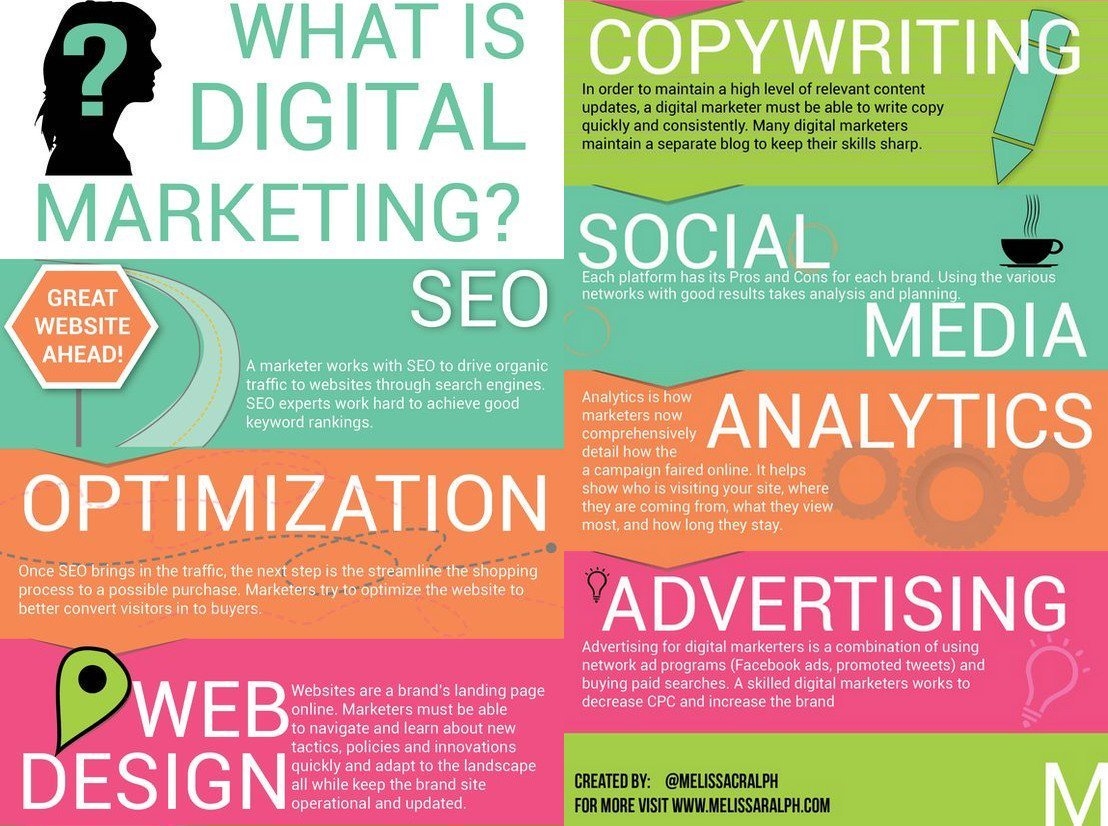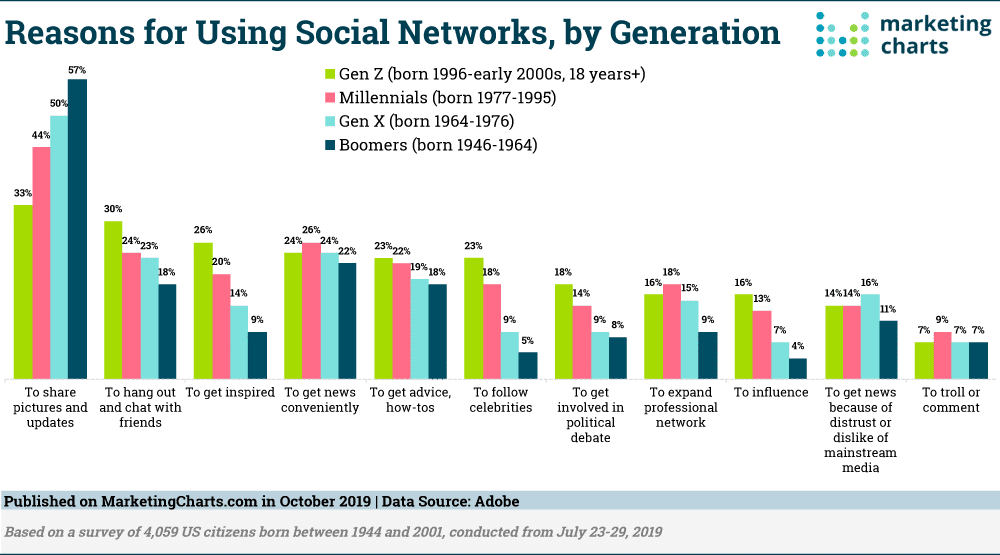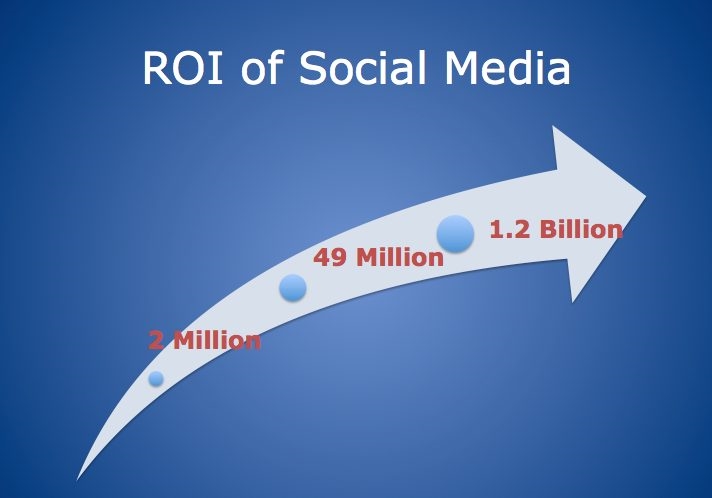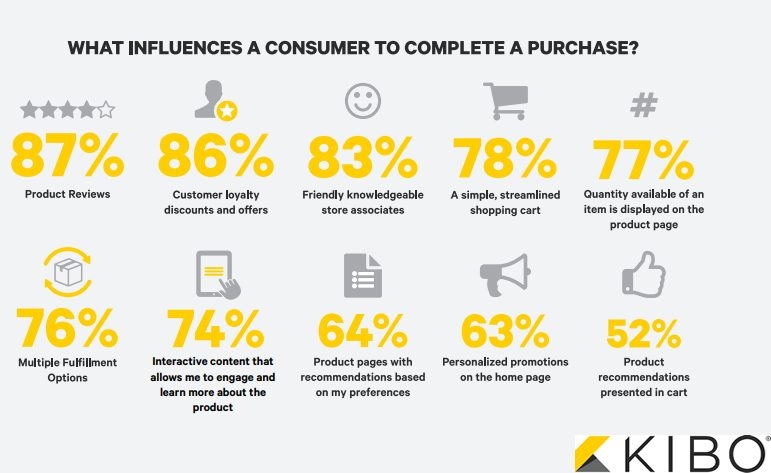Knowing when you need to change up your digital marketing campaign or just give it more time to meet your performance goals isn’t an easy decision. Sometimes your campaign just needs a few tweaks, other times you need to rethink every element of your digital marketing campaign. Moving too quickly to implement a change might kill your market performance since it can take 6 – 12 months to start seeing an improvement in your ROI. Wait too long to make a change and your business might fail. What’s a company to do? Let’s start with an understanding of why you need a digital marketing strategy.
Why you need digital marketing
All businesses rely on digital marketing to succeed. With millions of people online at any one time and with more and more people at home, it’s no wonder that consumers increasingly use digital tools to access businesses and meet their consumption needs.
This means that businesses must have an online presence–preferably employing several of these digital tactics: social media, a website, digital advertising, email marketing, content marketing, or influencer marketing. Digital marketing not only reaches a large swath of the consumer population, but it’s also cost-effective and generates measurable results to guide optimization.

Running your digital marketing campaigns see results from your efforts immediately in real-time (and over time) using tools like Google Analytics to see how many people visited your website, how they got there, who converted, and revenue derived from your digital marketing campaign, especially if you use tags and event tracking to provide nuanced details from your conversions. Did they use the ‘swipe up’ option on social media stories, did they search, or did they click on a link on a marketing email? From there, you can establish who converted, where they came from, what pages they visited on your website, how often they visited prior to conversion, and much more.
When working on your campaign, the results speak for themselves. However, interpreting the meaning behind the metrics is exceedingly challenging.
Here are some of the signs that you need to take another look at your digital marketing campaign to help decide how to improve performance.
Modify your digital marketing campaign or not?
Think of your marketing performance goal like the hole on a golf course (even miniature golf or a driving range counts for this example). Constantly adjusting your tactics may mean you constantly either fall short of the hole or overshoot it, rather than sink the ball. Aiming in the wrong direction means you never sink the ball despite how good your swing. Continuing to hit the ball the exact same way you always did also doesn’t produce the lowest score. Instead, you need to understand the course and external factors such as wind (the market, competition, and environmental factors), know where to aim your ball (determine effective tactics), and know when to change your approach.
The same is true for knowing when to modify (or if to modify) your digital marketing campaign. Here are some indications that you should consider a change.
1. You don’t see desired results from a channel
Every day, it seems, there’s another digital marketing channel to consider; the newest being TikTok. If you constantly switch from one channel to the next looking for the next big thing, you’ll likely see poorer results. That’s especially true as a small business with limited bandwidth. Using a few channels effectively is MUCH better than doing a poor job with a bunch of them. Plus, you need to start with the channels most likely to reach your target market. Below, you can see the best social media channel based on age. You can find similar charts for other critical consumer segments such as gender and income. Choose platforms that match your target market.
 Image courtesy of Marketing Charts
Image courtesy of Marketing Charts
Once you identified several candidates, winnow your choices down to a few you can effectively manage with your limited bandwidth. It often makes sense to start with the best prospect then add additional channels as you gain confidence with the first. Give your channel 6-12 months of hard work before discounting the channel or changing your strategy to ensure you see the true effect of your digital marketing campaign.
2. You lack engagement
Imagine your business has a Facebook page with 1500 likes. That is pretty good for a small business, right? If each of those people who ‘like’ your page made a purchase then your business likely turns a pretty nice provide. Right?
Wrong.
There’s little to no correlation between likes and ringing the cash register. Instead, you need to get followers/ fans to engage with your content. Through engagement, you amplify your message to reach vast numbers of new potential buyers (see the graphic below to see how this works).

Post engagement is a metric provided by many social media channels and something you should monitor on a consistent basis. If you don’t see engagement after 4 months or so, or you see a decline in engagement that you can’t explain based on rational reasoning such as holidays, then it’s time to consider a change in your digital marketing campaign.
To increase engagement, observe which types of posts generate the most engagement and concentrate on creating similar posts. Often, that means using human interest and backstage access to your community. Be timely and professional with your responses to comments, and react quickly to any complaints. Social media is a great way to show off your customer service and that builds trust over time.
3. You put too little effort into your digital marketing campaign
Most businesses are guilty of throwing together a campaign at the last minute at times, but making a habit of it is bad news.
Good campaigns take time, effort, and money. They require data analysis, testing, and targeting. For businesses that want cohesive marketing, then campaigns need advance planning by focusing on critical elements such as keywords, matching your messaging to your target market, hiring people who understand your market and digital tools such as automation, monitoring, and SEO, and deciding on the metrics you’ll use to measure success.
4. You’re not up to date with evolving consumer behaviors
The internet means that more and more people can access information more quickly than they ever have before. For that reason, customers become more savvy and discerning about which products they buy and from where. For instance, many buyers won’t complete a purchase if it doesn’t include free shipping since this perk is now widespread.
Thousands of potential customers on the lookout for a particular product or service go online to read reviews before visiting online or in-store retailers. Note in the graphic below that reviews influence 87% of purchase decisions, higher than any other factor.

Image courtesy of Digital Marketing Community
Reviews are one of the best sources of advertising a business can get. People who have a great experience are going to want to tell others about it. Having these positive reviews greatly impacts ROI.
5. Your website is old and obsolete
The internet is open 24/7. Potential customers are able to look at the products available from certain businesses and make a decision and purchase within moments. If your website is out of date, difficult to navigate, or makes the buying process more difficult, then it’s time to make it more user-friendly. Customers who can’t work out how to use your website will want to leave as soon as they get on there, a metric we call bounce rate.
We’ve all seen websites straight out of the early days of the internet with sliders, mobile sites that are unusable, and even content that isn’t up-to-date. It’s hard to trust a company that doesn’t put any effort into maintaining a modern website.
Conclusion
If you feel as though your digital marketing schemes are no longer working then it can affect how your business performs overall. Take the time to assess your current campaigns and make some small changes to bring in success.
Digital & Social Articles on Business 2 Community
(52)
Report Post







